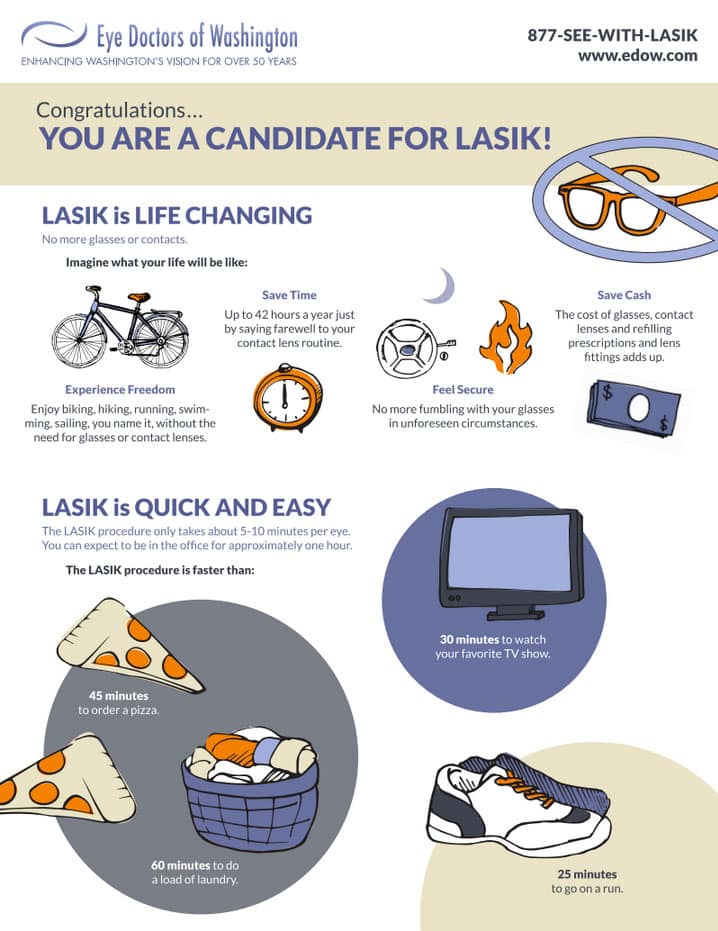How Does SMILE Eye Surgical Procedure Contrast To LASIK And PRK?
How Does SMILE Eye Surgical Procedure Contrast To LASIK And PRK?
Blog Article
Material By-McNamara Wilder
If you've been thinking about SMILE eye surgical procedure, you may wonder exactly how it stacks up against LASIK and PRK. Each procedure has its very own collection of benefits and considerations. From quicker recovery times to potential dangers, there are essential differences you need to understand before deciding. Understanding these differences will certainly assist you make an enlightened option that aligns with your details demands and expectations. Interested to understand more about how these treatments compare in detail? Keep exploring to gain a comprehensive understanding of SMILE, LASIK, and PRK.
SMILE Eye Surgical Procedure Overview
If you're considering SMILE eye surgery, you'll discover it to be a minimally invasive procedure with a fast recuperation time. During SMILE (Small Incision Lenticule Removal), a laser is utilized to produce a little, exact laceration in the cornea to eliminate a small piece of cells, improving it to remedy your vision. This varies from LASIK, where a flap is developed, and PRK, where the outer layer of the cornea is totally removed.
One of the essential benefits of SMILE is its minimally intrusive nature, leading to a faster recovery procedure and much less discomfort post-surgery. The recuperation time for SMILE is relatively fast, with several patients experiencing improved vision within a day or more. This makes it a preferred choice for those looking for a practical and effective vision adjustment treatment. Furthermore, SMILE has been shown to have a reduced risk of completely dry eye syndrome contrasted to LASIK, making it a beneficial alternative for people worried about this prospective side effect.
Distinctions Between SMILE, LASIK, and PRK
When comparing SMILE, LASIK, and PRK eye surgical procedures, it is very important to comprehend the unique techniques made use of in each procedure for vision adjustment.
SMILE (Little Cut Lenticule Removal) is a minimally intrusive procedure that involves developing a small cut to extract a lenticule from the cornea, improving it to deal with vision.
LASIK (Laser-Assisted In Situ Keratomileusis) involves producing a thin flap on the cornea, using a laser to improve the underlying cells, and afterwards repositioning the flap.
Ophthalmology Patient Portal (Photorefractive Keratectomy) gets rid of the outer layer of the cornea before improving the cells with a laser.
The main difference depends on the way the cornea is accessed and treated. SMILE is flapless, making it an excellent alternative for people with slim corneas or those associated with get in touch with sports. Laser Eye Surgery Age to the flap creation, however it might pose a higher threat of flap-related difficulties. PRK, although having a longer healing period, prevents flap-related concerns completely.
Recognizing these variances is vital in choosing the most ideal procedure for your vision adjustment needs.
Pros and Cons Comparison
To examine the advantages and disadvantages of SMILE, LASIK, and PRK eye surgical treatments, it's necessary to consider the specific advantages and potential restrictions of each procedure. SMILE surgical procedure provides the benefit of a minimally intrusive procedure, with a smaller laceration and possibly quicker healing time compared to LASIK and PRK. It also minimizes the risk of completely dry eye post-surgery, a common adverse effects of LASIK. However, SMILE might have limitations in dealing with greater degrees of nearsightedness or astigmatism compared to LASIK.
LASIK surgery provides rapid aesthetic healing and very little discomfort during the procedure. https://jamaica-gleaner.com/article/health/20190327/am-i-too-old-have-lasik-surgery 's very reliable in dealing with a large range of refractive mistakes, including myopia, hyperopia, and astigmatism. Yet, LASIK brings a threat of flap problems, which can influence the corneal structure.
PRK eye surgery, while not as preferred as LASIK, avoids developing a corneal flap, reducing the danger of flap-related issues. It's suitable for patients with thin corneas or uneven corneal surface areas. Nonetheless, PRK has a much longer healing time and may include much more pain throughout the healing procedure.
Conclusion
So, when it pertains to selecting in between SMILE, LASIK, and PRK, think about it like picking the ideal set of shoes. SMILE resembles a smooth, comfortable set of sneakers - quick and easy.
LASIK is a lot more like trendy high heels - showy and quick, however with some potential dangers.
PRK resembles strong treking boots - trusted and long lasting, yet calling for a bit even more time and effort.
Inevitably, the best selection depends upon your individual requirements and choices.
